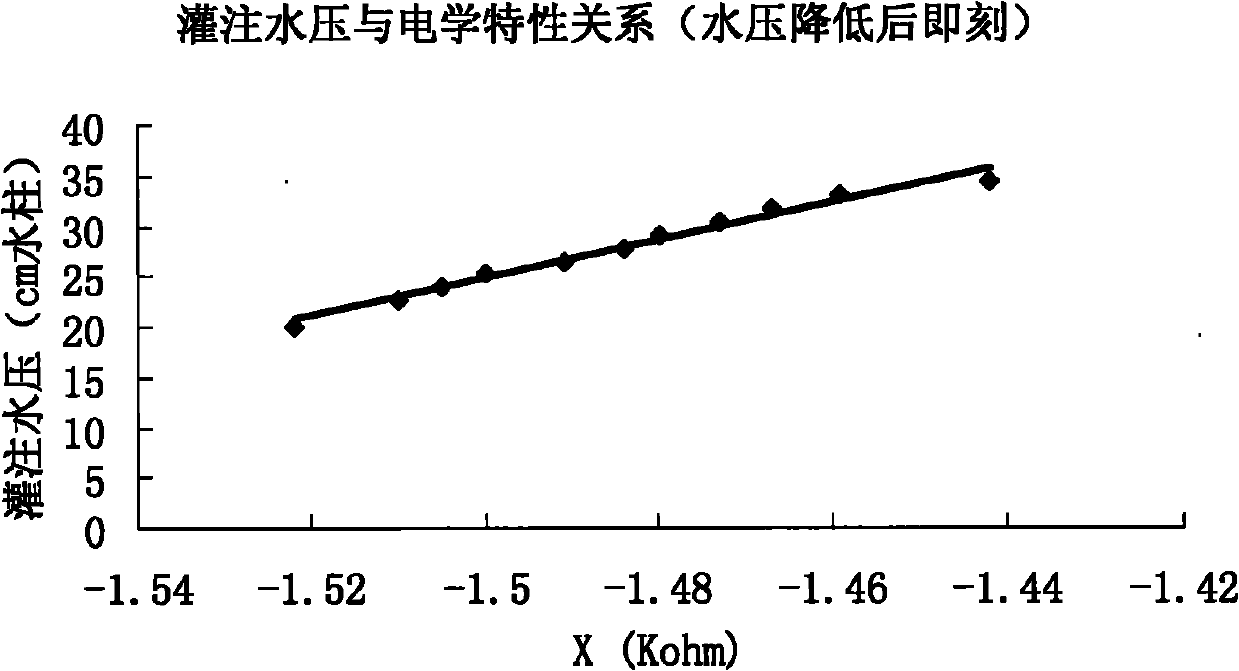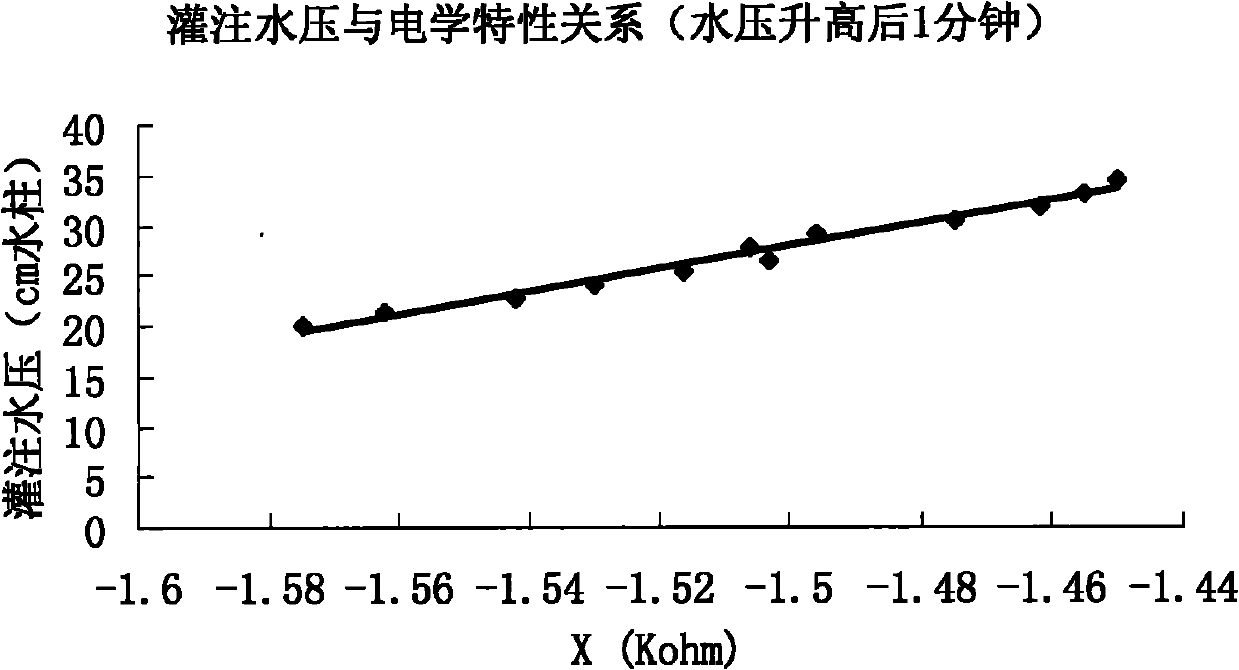System for monitoring intraocular pressure
A monitoring system and intraocular pressure technology, applied in the field of medical devices, can solve the problems of roughness, lack of sufficient and accurate basis for clinical diagnosis and treatment of glaucoma, and the discrepancy between the measurement results of the patient's normal physiological activities and the real situation, so as to avoid corneal damage. Effect
- Summary
- Abstract
- Description
- Claims
- Application Information
AI Technical Summary
Problems solved by technology
Method used
Image
Examples
Embodiment 1
[0018] Example 1 Correlation detection between electrical properties of sclera surface and intraocular pressure
[0019] To examine the correlation between the chemical properties of the sclera surface and intraocular pressure, we performed ex vivo experiments using porcine eyes. Insert the needle connected to the connector (note: the connector is an infusion set connected to the atmosphere, filled with physiological saline, and the level of the liquid level can be adjusted) into the eye of the cadaver pig from the optic nerve, and the recording electrode is a needle-shaped electrode. At the sclera of the limbus, the reference electrode is a gold-plated plate electrode, which is placed at the sclera of the limbus at a distance of 5 mm from the recording electrode. The height of the perfusion bottle of the connector was changed to adjust the intraocular pressure, and the change of the electrical properties of the porcine sclera surface caused by the change of intraocular pressu...
Embodiment 2
[0023] Embodiment 2 intraocular pressure monitoring system
[0024] see Figure 5, the intraocular pressure monitoring system includes a pressure sensor 101, a signal receiver 102 and a signal reading recorder 103, wherein the pressure sensor 101 is implanted under the conjunctiva of the limbus, contacts with the scleral tissue, and directly senses changes in eyeball pressure; the pressure sensor 101 converts the pressure signal felt into a digital electrical signal and sends it out, which is received by the signal receiver 102 worn on the ear through wireless transmission and transmitted to the signal reading recorder 103 for processing to obtain the intraocular pressure value, and the intraocular pressure The value is displayed and stored.
[0025] The structure of the pressure sensor implanted in the eye is as follows: Figure 6 As shown, the flexible microelectrode array 2 and the signal processing and transmission unit are included, and the flexible microelectrode array...
PUM
 Login to View More
Login to View More Abstract
Description
Claims
Application Information
 Login to View More
Login to View More - R&D
- Intellectual Property
- Life Sciences
- Materials
- Tech Scout
- Unparalleled Data Quality
- Higher Quality Content
- 60% Fewer Hallucinations
Browse by: Latest US Patents, China's latest patents, Technical Efficacy Thesaurus, Application Domain, Technology Topic, Popular Technical Reports.
© 2025 PatSnap. All rights reserved.Legal|Privacy policy|Modern Slavery Act Transparency Statement|Sitemap|About US| Contact US: help@patsnap.com



